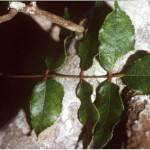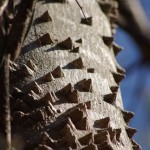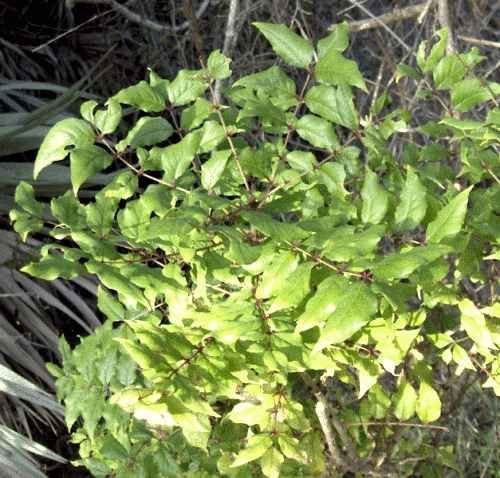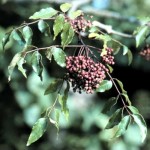Prickly Ash Bark (Southern) – Zanthoxylum clava-herculis
|
Current Demand = GOOD |
Parts Used: Bark |
 |
 |
 |
 |
Family Name: Rutaceae
Common Names: Hercules’ club, toothache tree, tingle-tongue, pepper-bark, southern prickly-ash…
Description:
The Prickly Ash Bark (Southern) can grow up to 40 feet in height and has a very unique, gray-brown and smooth bark. The bark has large spine-tipped corky-pyramidal projections, and as the tree ages, the spines disappear. The leaves alternate are deciduous or evergreen, with 7-9 narrowly elliptical to lanceolate that have round-pointed teeth and a waxy-shiny top with a light green bottom.
The flowers are single tiny and yellow-green with 5 petals and they bloom from early spring until early summer. The Prickly ash does have individual fruit that grows in clusters with a brown husk that splits open at maturity to reveal a shiny red-brown to black seed. The twigs are stout, greenish changing to brown-green, bearing sharp scattered single spines. The prickly ash bark can be found in sunny edges, dappled shade, woodland gardens and shady edges.
Planting/Cultivating:
Growing region: the southern prickly-ash grows along streams from southern Virginia to Florida and west to Texas and Arkansas.
The Prickly Ash bark prefers light, medium and heavy soil that must be well-drained. It can grow in semi-shade or no shade but must have moist soil. You must grow make and female plants if you want to produce seeds.
Seed: stored seeds require up to 3 months of cold stratification before sowing. Sow the seed in a cold frame as early in the year as possible. Germination should take place by late spring, but could be up to 12 months. Once the seedlings are large enough to transplant, place in individual pots and keep in a cold frame their first winter. In the spring, plant them to a permanent home.
Roots: Cuttings from the root should be at least 3cm in length and planted into pots horizontally and kept in a greenhouse until ready to transplant to a permanent home.
Harvesting/Drying:
Parts used: bark
When removing the bark the same principles apply as with other trees. Peel only one side of the tree or branch to allow the tree to heal and continue growing.
After harvest, lay the bark in a single layer preferable on a screen to allow good airflow and aid in drying. Drying time will depend on the thickness of the bark and drying conditions. When possible dry indoors in a well ventilated barn loft or attic to protect against the elements.
Hanging strips of bark from rafters also works well for drying. If natural heat is not available you may need to add heat and a fan for continuous airflow. The key to drying any root, herb or bark in an even combination of heat and airflow. Never use an oven or microwave.
Attributes (Images)
By Gaberlunzi (Richard Murphy) (Own work) [CC BY-SA 3.0], via Wikimedia Commons
By Homer Edward Price (Hercules’-Club leavesUploaded by Amada44) [CC BY 2.0], via Wikimedia Commons
 Root Buyer
Root Buyer